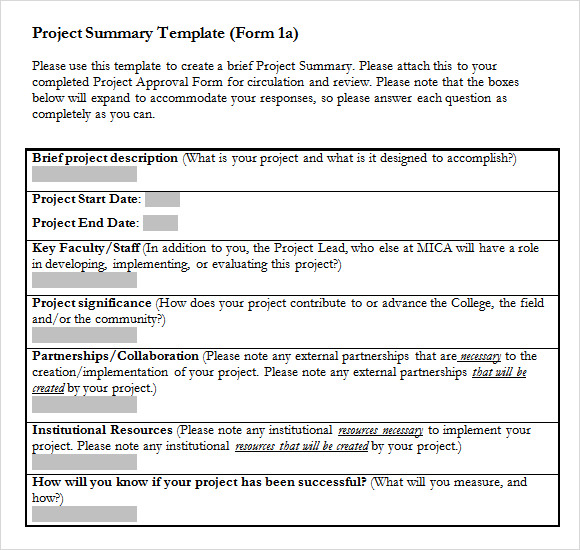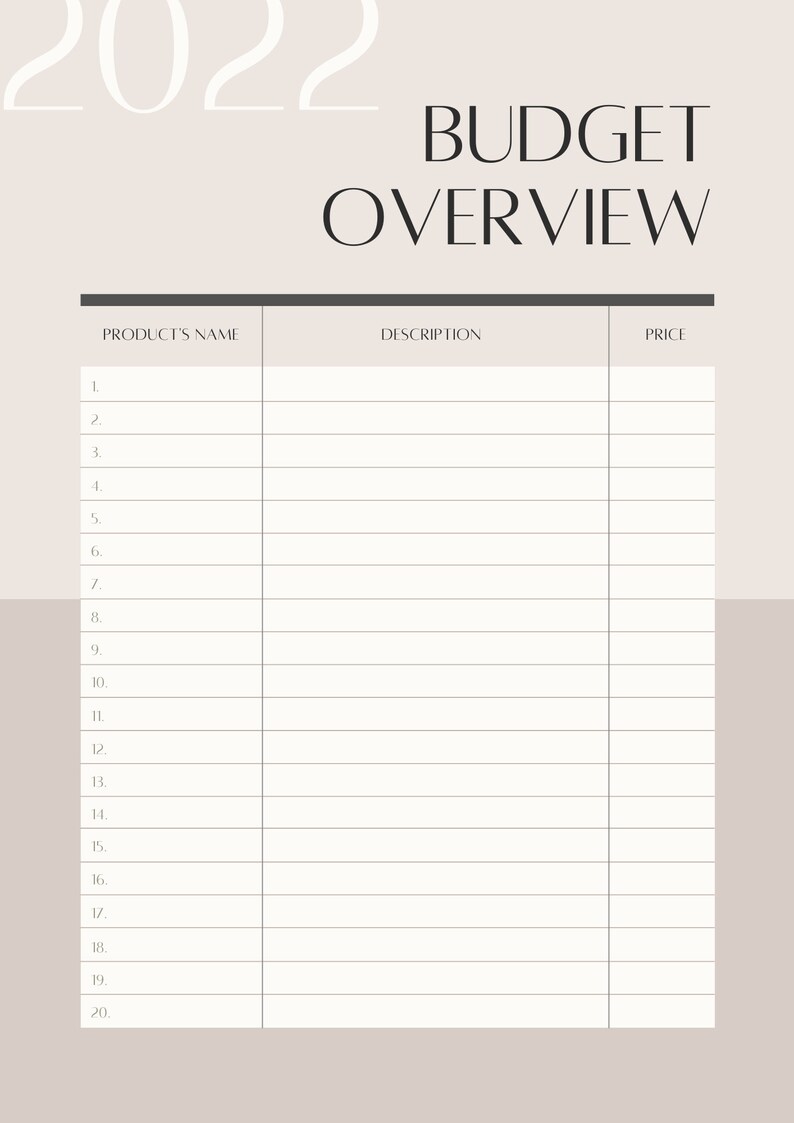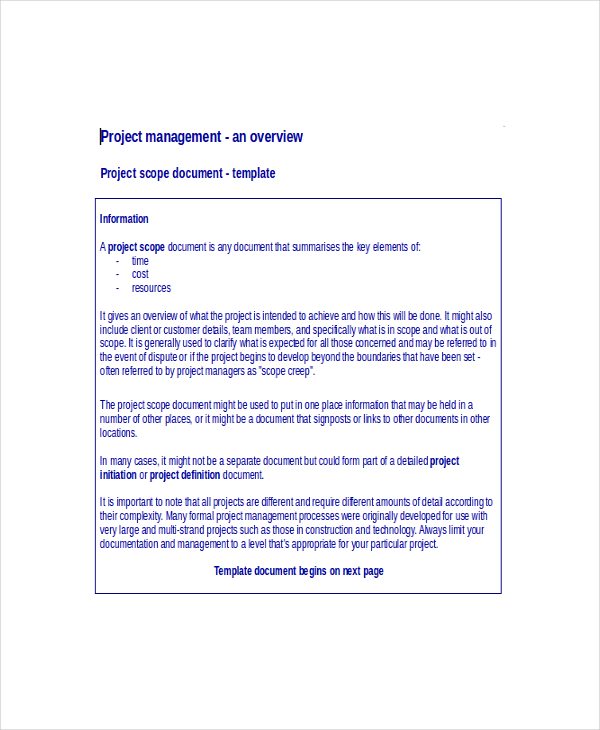
Talk to your clientsĪnother way to inform yourself about the project details is to talk to your clients. For example, it may be essential to conduct market research to assess your competitors' strategies and performances before you start your project. Use this time to research any unknowns to ensure you're well informed before starting the project. Once you assess the scope of the project, you may be missing some vital information. This allows you to create a project overview that can educate your team and clients on every aspect of the project. Start by determining the logistics of the project so you can summarize it in your overview.
#Project overview template how to
Related: How to Create a Project Communication Plan (With Template) How to write a project overviewįollow these steps to learn how to write a project overview: 1. This keeps the team organized and gives them something to refer to throughout the project. They may also create a project overview to ensure their team understands the project's goals and objectives.

Project managers create a project overview before the project begins to convince senior management that the project is necessary. Project managers tend to include the project overview at the beginning of a proposal or project plan to introduce the reader to the topic. Project overviews are typically one page or less, as they're a summary of the project. It also includes detailed information that summarizes the project's value, the problem it may solve, and the goals the team hopes to achieve.

A project overview includes basic information, such as the project name, project manager, and sponsors. Related: What is a Project Management Plan? With Tips and Examples What is a project overview?Ī project overview is an outline of a project that describes important details about it. In this article, we define project overview, tell you how to write a project overview, explain why having one is important, and give you tips, a template, and an example to help you write your own. Knowing more about project overviews and how to create one can help you stay organized and work more efficiently. A project overview outlines the important details of your project, such as its goals and potential risks. Clients-Access and view non-budgeted templates.If you're a project manager or are responsible for leading a team through a project, it may be helpful to create a project overview.Users with Project Financialsaccess-Add budgeted templates.Project Creators (and above)-Create and edit templates.Project Leads (and above)-Create and edit budgeted templates.Only projects with Financials enabled will inherit budget information from a template. If you do not see the template you created in the Use a template drop-down (when attempting to apply a template to a project), keep in mind that templates with budget information do not appear if the project's Financials have been disabled in Project Settings. Note: An account administrator can still edit a template that has the Shared (View Only) option selected even if they aren't the template owner. To make it available only to you, select Private from the Sharing drop-down. Tasks-Create a template that contains commonly recurring tasks you can apply these tasks to an existing project at any time by clicking the Apply a Template (“ ”) button in the project's Task Tracker tab or during the initial creation of a project.Ī template is viewable to other account members by default.Gantt-Any dependencies that you create in the gantt chart will be automatically reflected in the template.Checklists-Save time by adding checklist items directly to your template.Time-Enter a Start day (the day on which the task starts, relative to the project start day) and Duration for each task.


Resource Mapping-You can create unnamed resources and map real account members so that they are automatically invited to the project and assigned tasks.Budgets-Include time estimates and weighted milestones for your tasks.Here are some of the features you'll get when you create project templates: It's a great way to consistently reproduce project details such as descriptions, durations, budgets, and currency. When you create templates in Mavenlink, or using the Mavenlink API, you’ll be able to define a common structure for your high frequency projects without having to start from scratch each time. We know that some projects can be complex-with multiple tasks, deliverables and milestones.


 0 kommentar(er)
0 kommentar(er)
